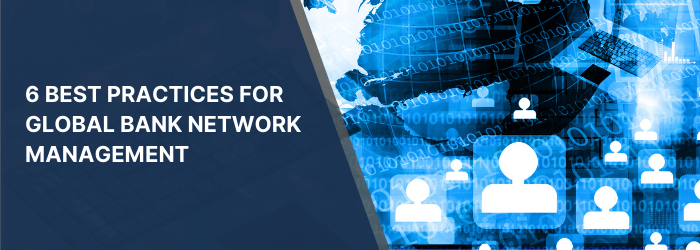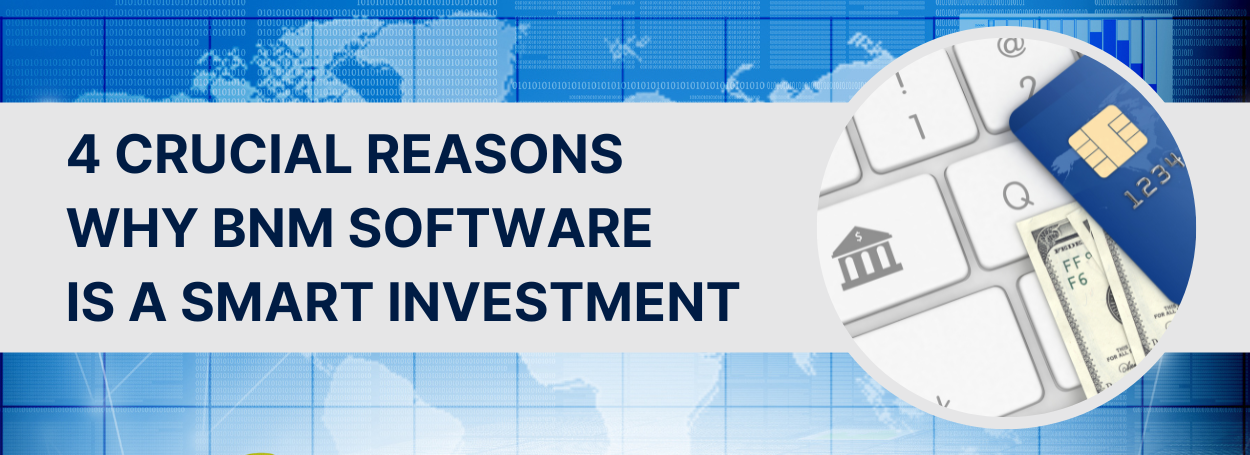ESG For Bank Network Management: What You Need to Know

If you’re reading this, it’s likely that you’re already familiar with Environmental, Social, and Governance (ESG), as numerous voluntary frameworks and talk of impending regulatory requirements are circulating most corporate channels today.
What you may be less sure of is the impact ESG will have on global bank networks, and enterprise financial services as a whole, as legislative and investor requirements shift from voluntary to mandatory in the coming years.
In Bank Network Management (BNM), managers are most concerned with asset protection and ensuring that what their customers have invested in, is safe with that organization.
Thus, when extended to ESG, it becomes a matter of evaluating and validating the ESG policies of your supplier network (whether they’re sub-custodian banks, cash correspondents, brokers, (I)CSDs, CCPs, etc.) and how they’re implementing ESG across their organizations.
“You don’t want to be doing everything you can to safeguard customer’s assets and risk working with an organization that isn’t fulfilling their published ESG goals or compliance. This extension on the typical network management function should be reviewed in the same manner as a supplier’s cyber risk management and mitigation, for example.”
-Russell Callaway, Business Development Manager, CENTRL
While risk managers cannot afford to ignore ESG, the challenge lies in implementing standards of ESG measurement across a global network where factors may vary wildly from region to region.
Furthermore, due to the lack of standardization and still developing regulations, many organizations are unsure which framework is best to serve as their guidepost for evaluating ESG evenly across the board.
To help resolve some of these challenges, this guide will define some of the core factors considered in each branch of ESG, how it impacts global bank network management, and how you can begin embedding ESG considerations into your due diligence processes.
What is Environmental, Social, and Governance (ESG)?
ESG incorporates three sets of criteria that all financial institutions should act on to:
- Comply with ESG regulations
- Manage their social and climate-related risks
- Align with global commitments to sustainability and social equity
- Improve investment decisions and lending practices
These criteria can be classified into three different categories: environmental, social, and governance.
E: Environmental
The E in ESG refers to environmental criteria, and considered factors such as:
- Energy usage
- Waste and waste management
- Carbon emissions
- Role in climate change
- Effect on the environment and biodiversity
- Pollution footprint
S: Social
Social criteria refer to the relationships between the company and its employees, institutions, individuals, and the broader community. It incorporates measures like:
- Human rights
- Board diversity
- Employee relations
- Working conditions
- Workers’ rights
G: Governance Criteria
All organizations, including financial institutions, require robust governance to function effectively. Thus, governance criteria include internal controls that enable financial organizations to:
- Comply with internal and external regulations
- Make effective decisions
- Fulfill stakeholders’ needs
In the next section, we’ll explore how these factors are being applied in bank network management.
How Does ESG Apply in Bank Network Management
The following are some of the common applications we’ve seen for ESG due diligence as it relates to the business practices at financial institutions and capital allocation frameworks.
Environmental Risk Factors
While less of a factor in bank network management, banks are still expected to be effective stewards of the environment.
Investors and regulators are urging financial institutions to refocus investments and partnerships toward opportunities where sustainability and reducing the carbon footprint is prioritized.
At the sub-custodian bank level, this could include initiatives around travel and eliminating paper-based processes and waste. It also means benchmarking existing levels of carbon output and waste to provide a baseline to measure any progress against.
Social Risk Factors
Shareholders, investors, and regulators are also closely scrutinizing multiple social risk factors across organizations, thus setting the tone for network managers to follow suit.
Consequently, many banks are now being evaluated according to their ability to incorporate diversity, promote equity and inclusion, and prevent racism, harassment, and bias within the workplace.
Furthermore, their ability to incorporate social criteria into their lending and capital allocation decisions is also being scrutinized.
Governance Risk Factors
Governance risk factors are also attracting a lot of attention from regulators, investors, and even the general public.
They want to know how financial institutions govern themselves, manage their operations, and whether their decisions are transparent and ethical.
Thus, it falls to network managers to enforce and regulate these aspects during due diligence certification and ensure that sub-custodian banks have verifiable compliance measures in place.
A few of the common applications we have seen in the BNM space include:
- Taking a stance against economic and social disparities
- Adopting carbon-neutral banking and sustainable finance
- Moving towards “green” underwriting
- Creating ESG-linked financial products
- Issuing social and “green” bonds, and sustainable exchange-traded funds (ETFs)
The Importance of ESG for Global Bank Networks
In the past, bank network management primarily focused on agent selection to:
- Manage risk
- Comply with regulatory requirements
- Minimize financial crime
- Optimize costs
- Protect client assets
- Enable clients to grow their businesses
But as the realities of climate risks, social inequalities, and other issues become more evident, network management is expanding to incorporate ESG considerations along with other ongoing trends in BNM.
In 2019, the Bank of England issued a chilling warning that if financial institutions didn’t make notable strides toward combating climate change, it could shake up financial/capital markets and result in losses of up to $20 trillion.
In effect, they said that climate change risks create financial risks. To minimize the latter, banks must do more to manage the former.
The Bank of England is not the only one talking about ESG-related risks. Over the last few years, other stakeholders have joined discussions around climate change, human rights abuses, and corporate governance. These include the following:
Regulatory Authorities
Environmental and social issues profoundly and directly influence a country’s economic stability and financial systems and impact company bottom lines.
That’s why many regulatory authorities and policymakers are urging financial institutions to re-assess their priorities from profits to people and the planet.
They also urge financial service providers to adopt and embed robust ESG programs into their business strategies and operating culture.
Investors
Institutional investors are also considering ESG in fine-tuning their investment strategies and decisions. Many prefer to invest in ESG funds and sustainable funds, some even asking for carbon footprint evaluations on portfolio companies.
Proof: in Q1 2020, 88% of sustainable funds outperformed non-sustainable funds. Further, inflows into ESG funds in the U.S. in H1 2020 topped $21 billion, nearly matching the total inflows into such funds throughout 2019.
These facts show that while investors want to earn high returns on their investments, they also want banks to acknowledge their ESG concerns and do more to do good.
Customers
Banks, investments, and funds should also prioritize their ESG programs to satisfy the demands of socially and environmentally-conscious customers.
These customers support banks and funds that focus on ESG concerns and responsible investing and provide measurable ESG reports.
Many are millennials who are expected to receive an inheritable wealth of almost $68 trillion by 2030. Since they represent such a valuable client base, it makes financial sense for financial institutions to meet their ESG demands.
Employees
Financial institutions should also invest in ESG programs and policies to drive greater employee retention and loyalty.
Employees tend to favor employers that focus on people and the planet over profits, and speak positively about them, which signals to customers and regulators that the company takes its ESG responsibilities seriously.
The Bottom Line
Global bank networks now have to deal with intense public scrutiny of their lending and other practices, particularly how they impact carbon emissions, biodiversity, human rights, social equity, and other ESG topics.
If they fall short, their reputational risk increases, as does the risk of financial losses. Conversely, new emissions targets and additional investments in sustainability will create new business opportunities.
By embedding ESG into their business models, they can:
- Support clients with their sustainable investing goals and thus strengthen their relationships with them
- Facilitate capital reallocation into low-carbon activities
- Create new revenue streams
- Achieve a competitive advantage
- Add greater value and long term sustainability for the network by proactively managing ESG risk.
BNM360: Streamlined BNM Processes and ESG Risk Management
CENTRL’s BNM360 is a comprehensive and advanced BNM platform that can help you to automate ESG risk assessment, mitigation, and monitoring activities.
With BNM360, network managers can track and analyze risks in real-time and automatically schedule Due Diligence Questionnaires (DDQs) by risk level. Furthermore, BNM360 incorporates industry-standard DDQ templates, while also allowing you to customize your DDQ or import proprietary DDQs.
This is particularly helpful if, like many due diligence professionals, you are being asked to add a more nuanced consultative process or additional measures to support measurement and validation of ESG requirements.
The platform also helps streamline DDQ monitoring, issue management, and account management. It features a modern software architecture, open API-driven design, role-based access control, and many other features to simplify end-to-end BNM workflows.
See the platform’s intuitive portals, dynamic dashboards, metrics reporting, and document repository in action. Book a demo today!

